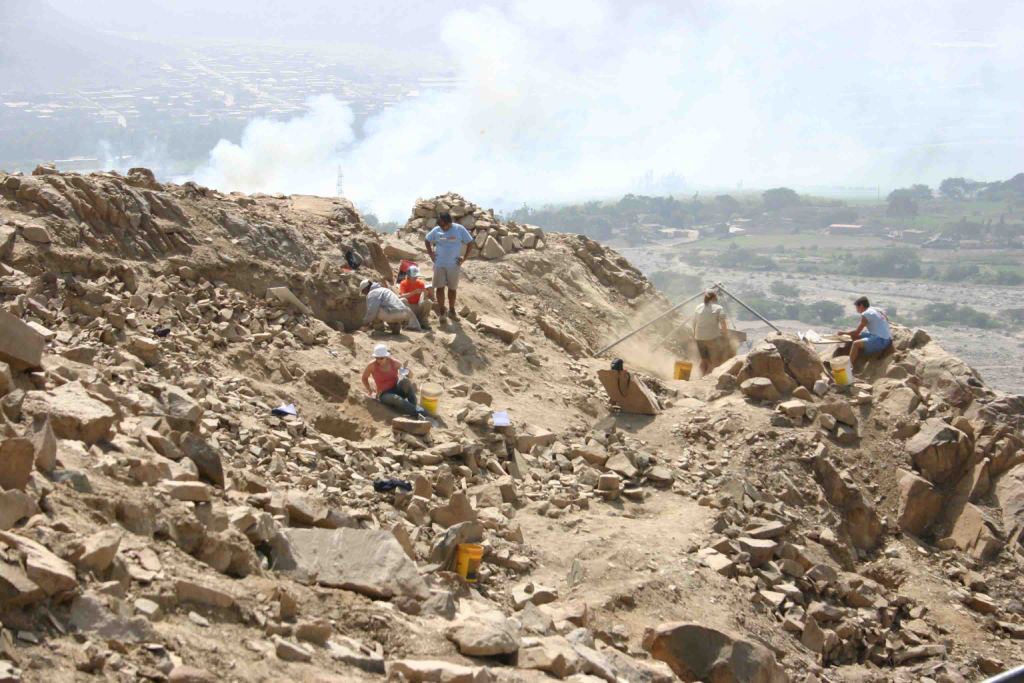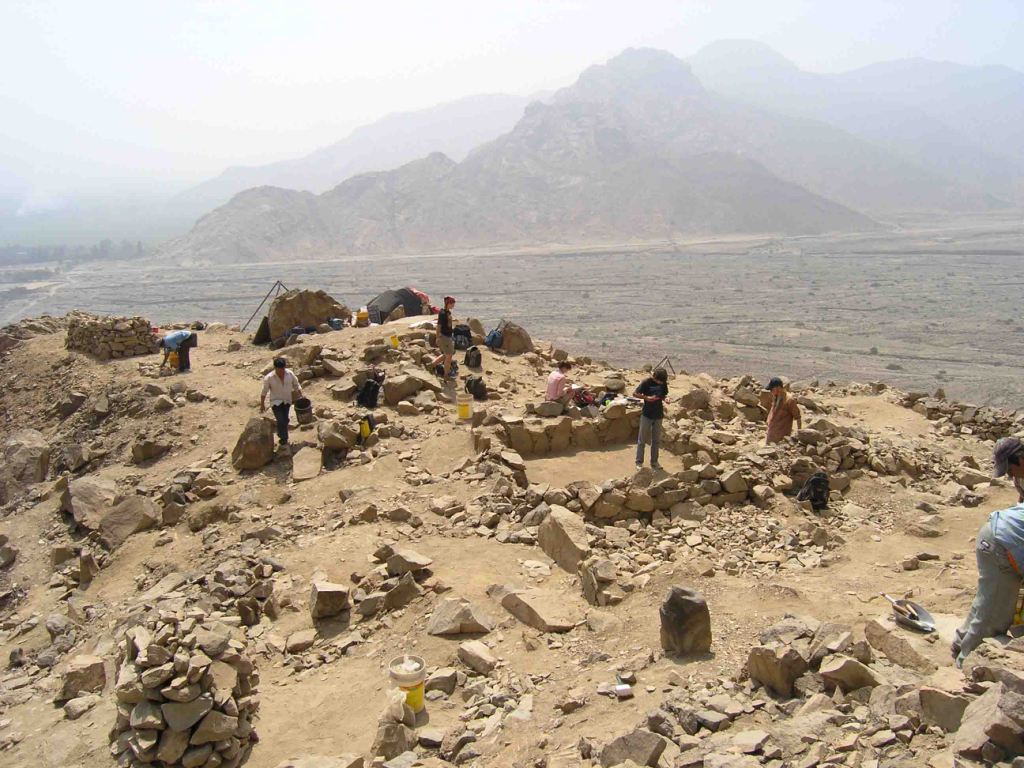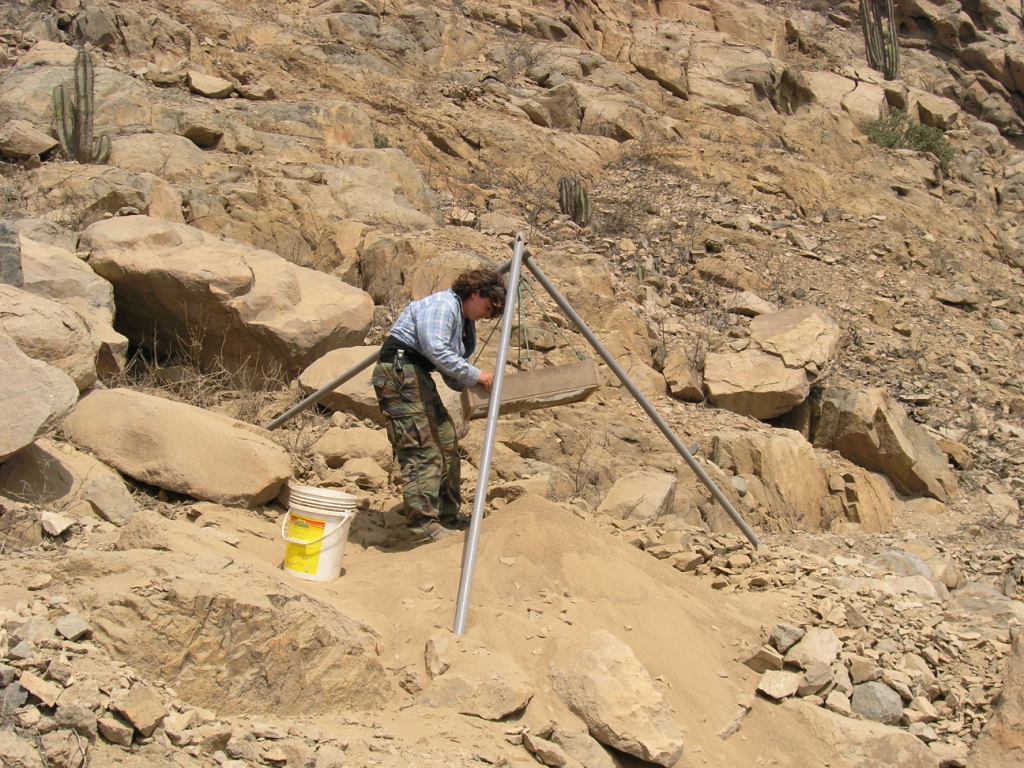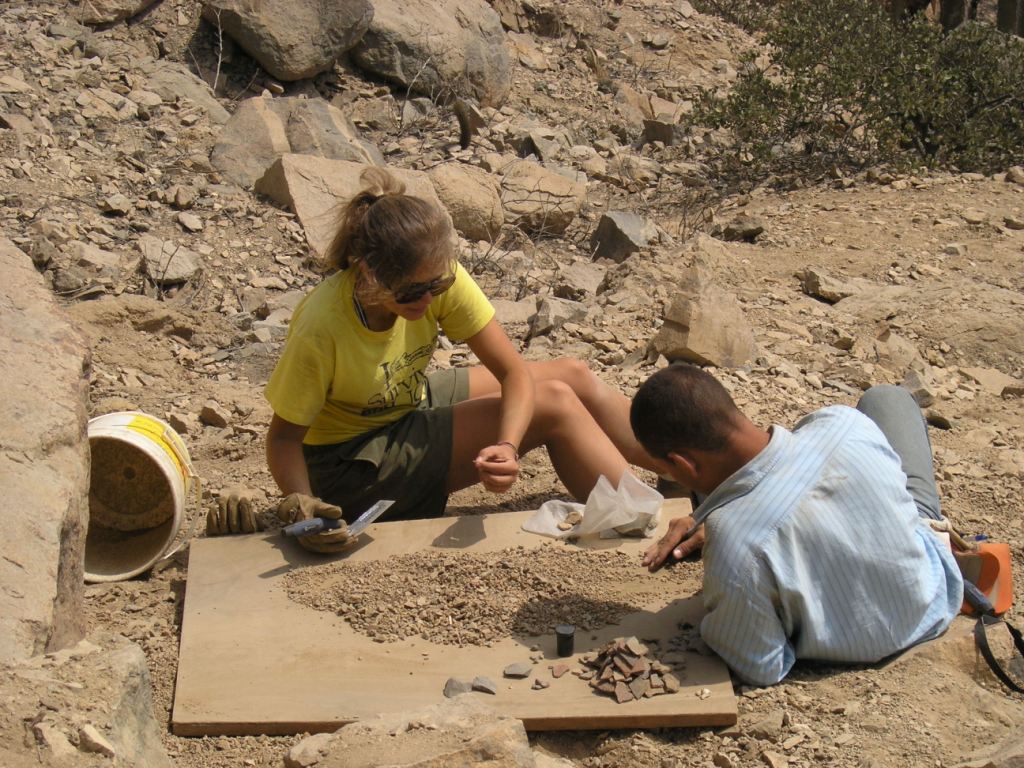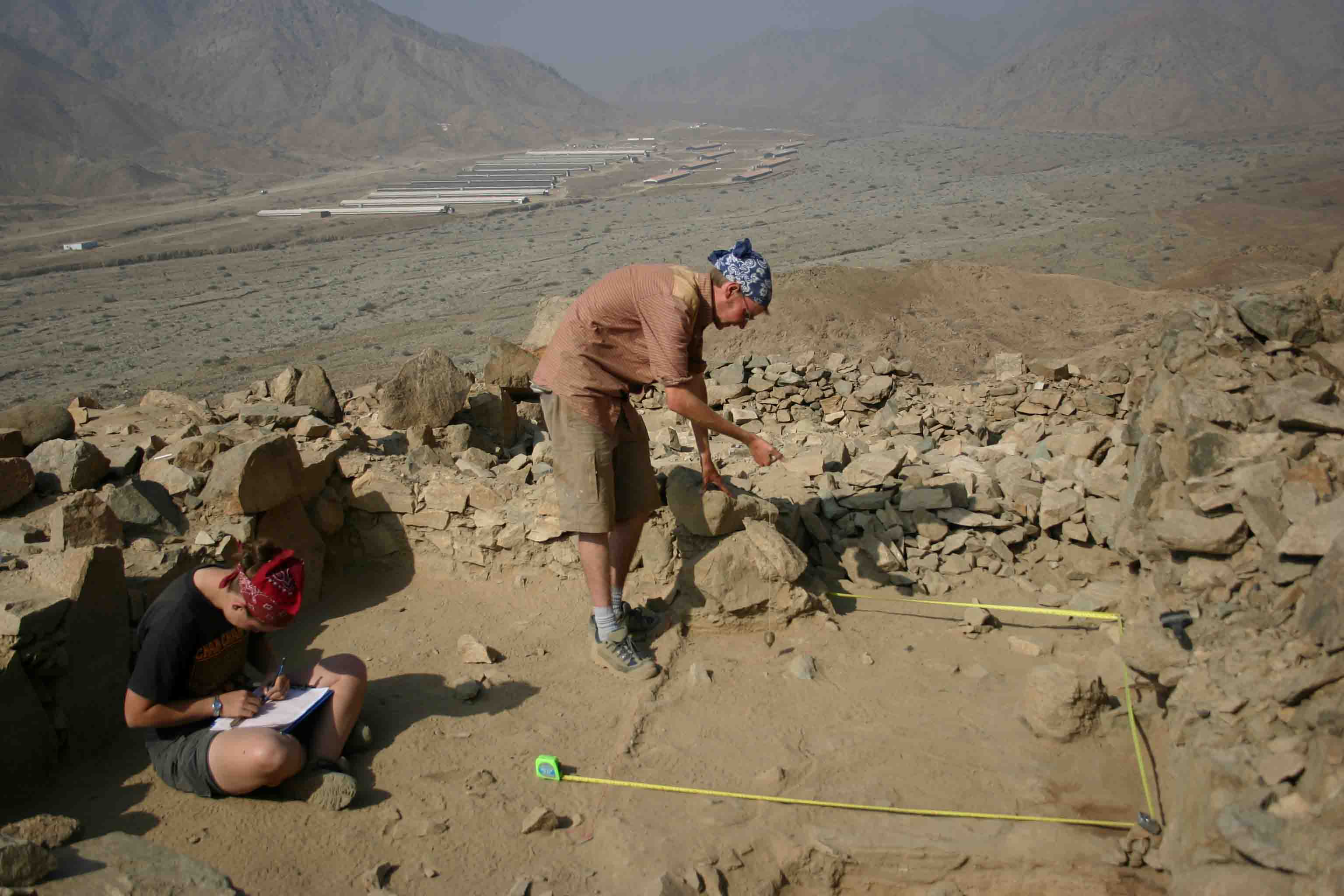FIELDWORK ON THE PROJECT
A
TYPICAL DAY IN THE FIELD
Monday through Friday our day our day begins early. We leave the project house in Huanchaco by 7:00 AM after a light breakfast. We have a typical Peruvian breakfast: juice, coffee, tea (regular and herb teas), fruit, yogurt, fresh baked bread, jams, and butter.
View of Huanchaco from the NorthBy 7:00 we board the van for a 40-minute ride to the middle valley. After two days of workshops on artifact analysis, we will begin excavating at the site. The students are divided into crews of four students and one grad student. Each team is assigned a household compound to excavate.
Student crew working on Compound 3, at Cerro Leon, 2004 field season
Student crew working on Compound 1, at Cerro Leon, 2005 field season
Each team is responsible for completely excavating and documenting their assigned compound, which involves filling out excavation forms, drawings profiles, cross-sections, and plan maps, and photographing each room. In the field, you will receive instruction in how to do all these things. You will also keep a daily journal of your experience.
All dirt from our excavations is haul to screens by bucket
and then passed through 1/8-inch screen
Students at the sorting board at Cerro Leon. All the material that doesn't pass
through the screen is dumped on a board and all artifacts & ecofacts collected.Because we know so little about pre-Moche and Moche domestic architecture, we are excavating 100 percent of several household compounds. Rooms and patios are excavated by halves or quarters, rather than by 1-by-1-m units.
The work can be physically demanding and tedious.
Mapping a kitchen and living room at Cerro LeonAt noon we take a 1/2-hour lunch break. Each morning the cooks lay out bread, cheese, sandwich meat, fruit, and snacks for the students to pack their own lunches. By noon, the low clouds and fog generally burn off and temperatures climb to the 70s or low 80s. Sunscreen and hats are essential. Most people usually work in shorts, T-shirt, hat, and bandanna with a long sleeve shirt for the morning. Some may find the mornings too cold for shorts. Mornings and evenings are colder than you would expect; bring some warm clothing! After lunch, we continue work until around 3:00. At the end of the day we load up copious quantities of artifacts (large sacks filled with hundreds of sherds) and return to the lab house by bus.†
Students check in all artifacts and paperwork at the lab house. Each team will also spend some days in the lab, washing the artifacts from their excavations. After 4:00 the rest of the day and evening are free time. Dinner is served between 6:00 and 7:00. Dinners are typical Peruvian cooking and usually consist of three courses and fruit juice. The first course is either soup or salad. Some common main courses are lomo saltado (stir fried beef and vegetables), aji de gallina (chicken in a cheese and chile sauce), fried fish, fish in various sauces such as ajo de mojo (a garlic sauce) or chorrillana (a tomato, chile, and onion sauce), bistec encebollado (minute steak smothered in fried onions and tomatoes), and stewed duck (a north coast specialty). The main course is served with white rice or potatoes or both. Peruvian food is not even remotely like Mexican food, so banish all thoughts of tacos, burritos, and enchiladas. It is similar to Cuban, Puerto Rican, or Spanish cooking. Vegetarian meals are available; however, we canít provide vegan meals. Dessert is served with dinner a few times a week. The project has a staff of cooks who prepares all the food and washes the dishes. You wonít have kitchen chores.
